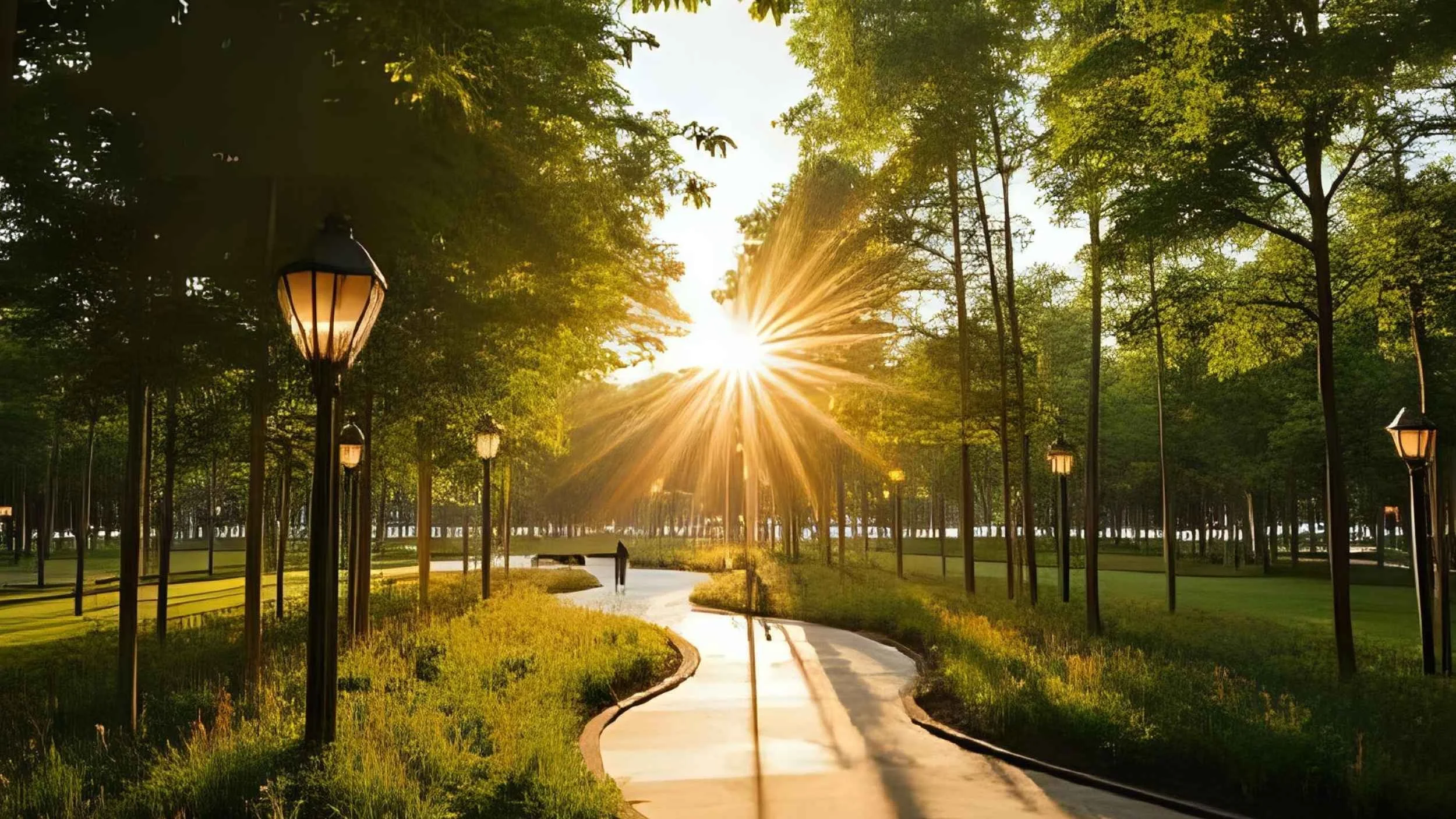
The Climate Park: Tomorrow’s Solution, Growing Today
A living urban system that captures CO₂, restores biodiversity, and turns green space into powerful climate infrastructure.
What if a park could fight climate change? What if green space wasn’t just for escape — but for impact?
Welcome to the Climate Park — a living, growing solution for our cities and our planet. Powered by DCT’s breakthrough regenerative products, it’s more than a park — it’s a climate asset.
A Park That Works as Hard as Nature
The Climate Park is powered by cutting-edge, nature-based technology that supercharges the natural systems beneath our feet. Soil becomes more than a medium — it becomes a powerful climate tool.
Enhanced biology and soil vitality turn the park into a carbon-hungry sponge, capturing atmospheric CO₂ and locking it safely below the surface, year after year.
A single hectare of Climate Park can remove up to 20–30 tons of CO₂ annually, making it an active part of the city's climate strategy.
Urban Regeneration, Supercharged
This isn’t landscaping as usual. The Climate Park represents a radical shift in how we design and manage green spaces:
Plants grow deeper, stronger, faster
Soil holds more carbon and more water
Microbial life flourishes
Ecosystems begin to self-renew
Parks become self-sustaining biomes, less reliant on synthetic inputs and more aligned with the rhythms of the natural world.
A Biodiversity Revival
By enriching life below ground, we create a cascade of vitality above ground.
Expect:
Explosions of native wildflowers
Pollinators in abundance
Healthier trees and understory layers
Birdsong returning to urban canopies
It’s not just more life — it’s smarter, more resilient life. Designed for urban density, but rooted in ecological intelligence.
A New Urban Climate Infrastructure
The park becomes a climate stabiliser:
Capturing and storing rainwater
Reducing urban flooding
Withstanding drought and heat
Cooling surrounding neighborhoods naturally
The result? Lower irrigation costs, cooler cities, and fewer climate-related disruptions.
A Blueprint for Tomorrow’s Cities
This is more than a park — it’s a template for regenerative urban living. A place where ecology, technology, and community come together to solve our biggest challenges.
Every Climate Park becomes:
A carbon sink that grows stronger over time
A climate education hub for schools and citizens
A biodiversity corridor woven into the urban fabric
A resilience zone ready for tomorrow’s extremes
The Future Has Roots
This isn’t a pilot — this is a movement. The Climate Park model can scale across cities, regions, and nations, transforming how we think about public space.
It's a new standard for regeneration — one that turns underused green spaces into active players in the fight for a livable future.
Imagine the Headlines by 2030:
“Climate Parks Remove Thousands of Tons of CO₂ While Cooling Cities”
“New Urban Parks Lead the Charge in Biodiversity Recovery”
“Community Climate Hubs Bring Regeneration to the Neighbourhood”
“The Park That Pays Back: Cities Turn Green Space Into Climate Infrastructure”
Let’s Plant the Future
The Climate Park isn’t a dream — it’s a solution ready to be built.
At DCT, we have the regenerative inputs. We have the vision.
What we need now is your will to act.
Together, we can transform cities into living, breathing landscapes — and restore balance to our planet.
Join us. Let’s build the future.
Looking a Little Further Ahead:
A Park Where the Soil Powers Its Own Lights
As we imagine the future of truly regenerative public spaces, one possibility shines brighter — quite literally. What if the soil beneath our feet didn’t just grow plants and store carbon, but also generated electricity?
Emerging research into microbial fuel cells suggests that it could one day be possible to harvest small amounts of energy from soil biology — enough to power pathway lights, sensors, or interactive displays within the park.
This vision becomes even more compelling when paired with DCT’s regenerative soil technologies, which are designed to stimulate microbial life and organic soil processes. By enriching and energising the soil ecosystem, DCT may help lay the groundwork for living soils that double as low-voltage energy sources.
Imagine strolling through the Climate Park at night, where the lights are gently powered by the very soil that supports the trees around you — a self-sustaining system where nature provides not just beauty and carbon capture, but energy too.
While energy to power lights from soil biology is still a concept in development, it reflects the kind of bold, integrated thinking that defines the Climate Park — and DCT’s role in creating the regenerative technologies that make such futures possible.






